 |
|
|
|
|
|
Trail Weather Weather Forecasts and Current Conditions Choose a location from the list and the forecast will appear in a new window.
Most trails in our local riding area don't respond well to rain. They have a high content of clay that turns into sticky, slippery muck that binds to everything it touches. It builds up on the tires, like a snowball rolling downhill, until it jams on the frame and the wheels won't budge. Some models of clipless pedals refuse to yield when full of this mud, resulting in the bike and the attached rider lying sideways in a puddle. Most wet trails don't respond well to bikers, hikers or equestrians until they've had time to dry out. Hikers and horses make holes and ridges in the trail that become as hard as concrete when the trail dries. These holes and ridges are good for twisting ankles of trail users who aren't constantly watching their step.
For these reasons, riders are well advised to stay off the trails after a rain until they have dried. How long to stay off? That depends on a number of factors including the particular trail, how much rain it received, how much sun it gets after the rain (is it in the shade or face south?), how warm and windy the weather is, and so on. After an isolated light rain you can probably ride the next day. After a heavy rain, you should wait several days. This is something where common sense and experience will help.
Wind, Red Flag Warnings and Fire Southern California is a fire-prone area characterized by an extended dry season and dense chaparral vegetation that dries out from spring through fall. Fire is a natural part of the Chaparral plant community life cycle, burning once every 30 years on average. Southern California experiences intense Santa Ana winds typically in the fall and into winter. Santa Ana’s originate over the desert at altitudes upwards of 3,000 feet and the air mass travels towards the coast at sea level. As the air travels down slope, it heats up and dries out. Combine these strong, hot, dry winds with dry, waxy vegetation, and we have extremely high fire potential.
Red Flag Days are determined by the level of fire danger being HIGH or EXTREME, combined with Red Flag weather criteria provided by the National Weather Service. The local Red Flag weather criteria are any one of the following:
As mountain bikers, there are a few things that we need to be aware of.
Following a fire, trails may not be opened for weeks. According to the Mountains Recreation Conservation Authority (MRCA), several things need to occur before park areas are deemed safe to re-open. Agency personnel need to make sure the fire is completely out (tree trunks and roots can smolder for weeks) and that trail hazards are alleviated or removed. In addition, surviving animals need time to relocate without the additional stress of human intrusion. And, when the parks re-open, it is more important than ever to stay on established trails to allow for natural regeneration of the ecosystem to occur and to avoid causing erosion, especially with winter rains approaching. As users of the backcountry, it is important
for mountain bikers to act responsibly, not only when riding, but also by knowing
when not to ride. Part of our continuing effort to gain access to more trails
is demonstrating to both land managers and other users of the trails that we
are responsible members of the trails community, and that we will treat the
backcountry with the respect that is required to preserve it. |
Copyright 1987-2020 CORBA. All Rights Reserved.
Privacy Policy

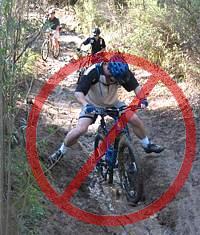 Riding after Rain
Riding after Rain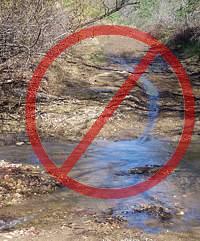 On
wet trails, bikes make grooves down the middle.
On
wet trails, bikes make grooves down the middle.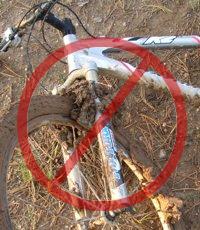 And the mud is particularly hard to remove.
And the mud is particularly hard to remove.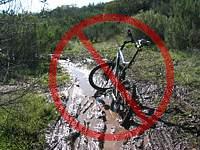 But
if the trails are soaking, all is not lost
But
if the trails are soaking, all is not lost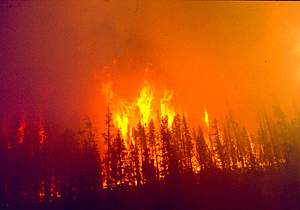 In
LA County
In
LA County
